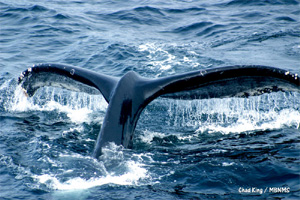FACTS
- Shore-based whaling took place in Moss Landing from 1919 to 1926.
- Gray, humpback, and sperm whales were targeted.
- New technology, including steam-powered boats with bow-mounted harpoons, allowed whalers to hunt more efficiently than ever before.
- Whaling in Moss Landing ended in 1926 because of depleted whale populations in the region.
While it is difficult to imagine, Moss Landing Harbor was the site of a commercial whaling operation less than eighty years ago. In 1914, a Norwegian whaler named Captain Frederick Dedrick opened the California Sea Products Company, which included processing buildings (where the Monterey Bay Aquarium Research Institute now stands) and two steam-powered chase boats with bow-mounted harpoon guns.
The boats operated by Dedrick represented the latest in whaling technology. In the 1800’s, whalers had to use small, human-powered boats with hand-thrown harpoons that required an incredible amount of endurance, skill and time. Dedrick and his crew had a decisive advantage over their predecessors, with greater mobility and speed.
Due to delays caused by World War I, whales were not brought to the new Moss Landing facility until 1919, when a large sperm whale was harpooned by the crew of the Hercules on January 22. Hunting out of Moss Landing focused primarily on gray, humpback and sperm whales, which were processed for a variety of products. The blubber was processed for oil to be used in soaps, the meat was cooked and incorporated in chicken feed, and the bones were ground into bone meal.
Estimates on the number of whales caught and processed in Moss Landing are unavailable. However, it is inferred that heavy whaling took place with the new steam-powered boats and mounted harpoons, because whale populations in the vicinity began to drop off around 1924. By 1926, Dedrick ceased shore-based whaling operations at Moss Landing because it was no longer profitable.
The impacts of Monterey Bay whaling were evident to Edwin Starks, who wrote on the subject in 1923: “People whose interest is in the profit of whaling often speak of the whale supply as being inexhaustible, but to appreciate that the whales are becoming scarce on our coast one has to remember back only ten or fifteen years, when standing on the shore of the open ocean and looking seaward one could nearly always see a whale or two spouting. Nowadays, it is only at long intervals that a whale is seen.” The entire 1923 report by Starks is available for download at the link below (Fish Bulletin No. 6).
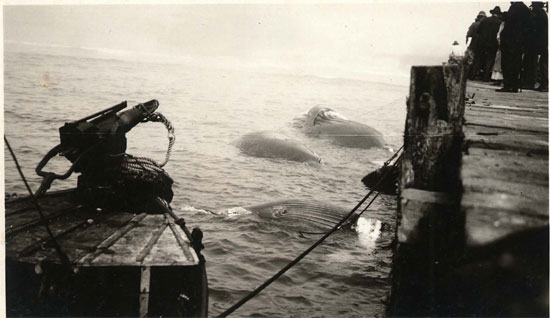
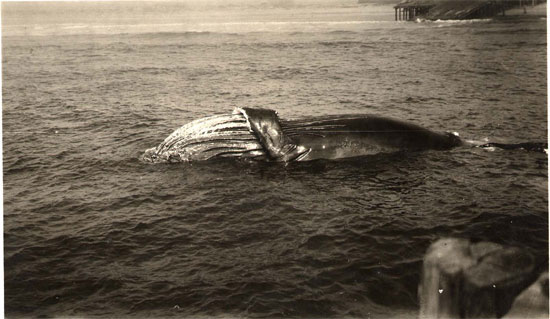
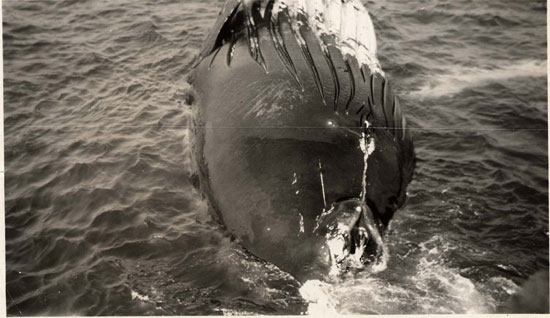
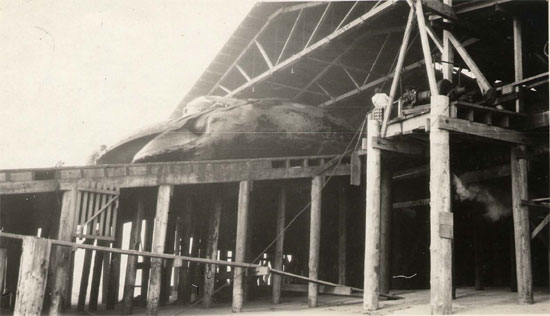
All historic photos courtesy of Dorothy Carnie.
Links to More Information
Fish Bulletin No. 6. “A history of California shore whaling” (January 1, 1923)
A “Secret History” of the Moss Landing Whaling Station
